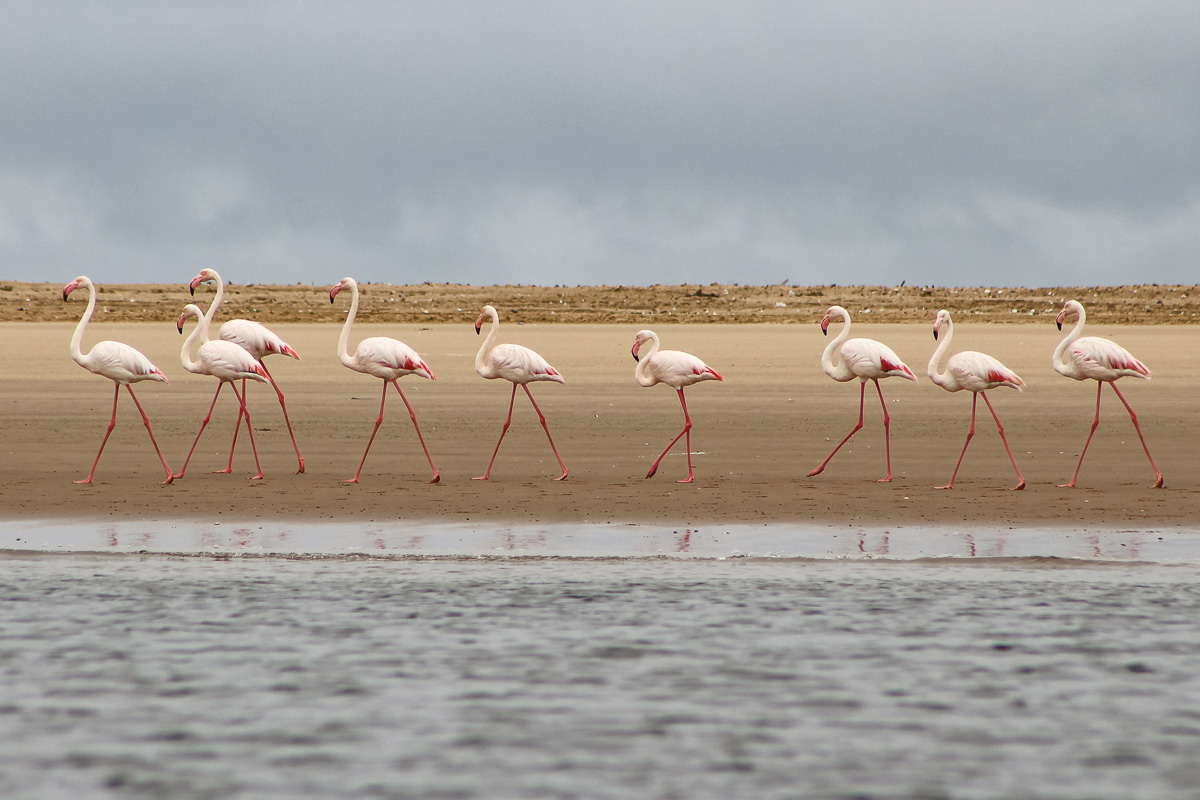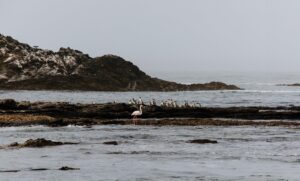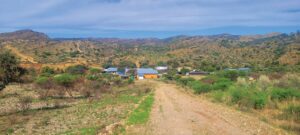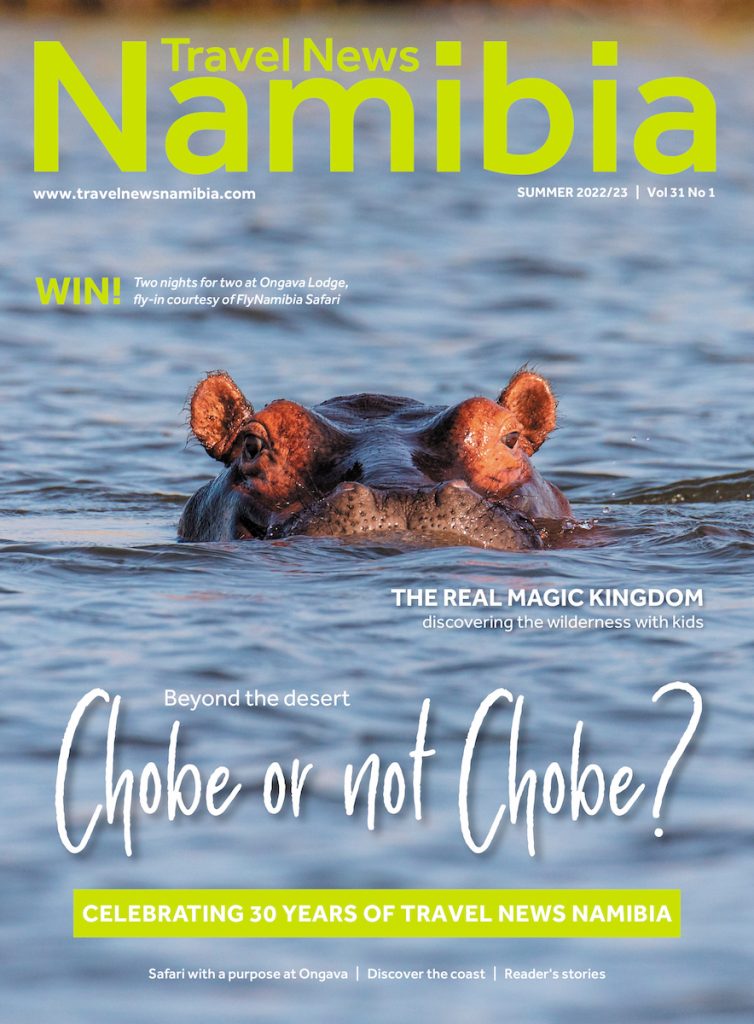

On the turf of sailors, surfers and anglers
The Namibian coast – particularly the middle section – has always been synonymous with holidays for me. Growing up, I spent every Christmas, Easter and most long weekends in the tiny town of Henties Bay. We would load the car so full it looked like we were emigrating every time, stop only once for a bathroom and biltong-buying break, and finally take the dirt road past Spitzkoppe. My sister and I would stare out of the window in anticipation, knowing that as soon as the mist bank appeared above the horizon and the terrain levelled out to a long, flat stretch, the holiday had begun.
Text & Photographs Charene Labuschagne
From the Summer 2022/23 issue
The most important thing to note about this area is that, although it includes beaches, the ocean and a spectacular dune belt of the Namib desert, it is often overcast and misty. Yet, that forms part of the appeal of its three quaint towns, namely Walvis Bay, Swakopmund and Henties Bay.
Each town has a distinct vibe. Walvis has the charm of an old sailor’s town, with a world-class harbour, fish factories and a lagoon dotted with pink flamingos stretching as far as the eye can see. Swakopmund has an artsy, alternative vibe to it. Naturally the surfers congregate here and so do foodies, hippies, and everyone keen on the soft life. Henties Bay is the angler’s hub and has morphed over the decades to be the perfect little beach town for Namibians to retire. If you had to pick just one, I would recommend Swakopmund. But if you have the time, spend it on a few lazy days on the Namibian coast, hopping from one slow town to the next.
Walvis Bay
Supposedly the world’s longest palm-tree-lined avenue welcomes you to the sailor’s town of Walvis Bay. Here, industry, food and the social scene revolves around the ocean. The harbour is ranked one of the best in Southern Africa and services our land-locked neighbouring countries. On the outskirts of Walvis Bay is the largest producer of solar sea salt in sub-Saharan Africa. It is also one of four Ramsar sites in the country, a birding paradise of international importance and a great attraction for birders and just about everyone else.
The Walvis Bay Yacht Club, an old, charming and uncertified national monument, is the home of local water activity. If ever you fret about sailors being a dying breed, or mollycoddling your own children, spend a Saturday on the deck at the yacht club. Kids of all ages venture out onto the water, some in two-person training boats, others on bigger catamarans. Did I mention the adults sit at bay and supervise from afar? It’s ridiculously refreshing, both the food and drinks served by the restaurant, and witnessing a fraction of this generation being so brave, disciplined and simply outdoors.
While catamaran tours are widely available in Walvis Bay, an extra special experience is kayaking at Pelican Point. The peninsula stretching around the lagoon is home to a large colony of cape fur seals. Kayaking tours transport guests from Walvis Bay to Pelican Point, from where you will paddle out amongst the mammals, which will likely swim and splash in the water around you, or lazily lie on the beach. Catamarans cannot possibly get you this close to the animals. However tempting it may be, please do not touch the seals.
Swakopmund
This slow town at the mouth of the Swakop River is a favourite for locals and visitors alike. Its centre is filled to the brim with unique shops and restaurants, from antique stores to boutiques, Brauhauses to bustling coffee shops. The best way to explore the heart of Swakopmund is by foot. This way you can stroll through pedestrian-friendly arcades, find a few hidden gems, photograph the historical architecture and stop for ice cream, all at a leisurely pace.
The best way to embrace the surfer lifestyle associated with Swakopmund, other than zipping up a wetsuit and paddling out into the Atlantic, is spending time by the sea. It is easy to get lost in all the artsy, edgy and historical establishments, but this town is truly about taking it slow. People-watching is one of my favourite sports, and the beach by The Mole is the perfect place to do so. Alternatively, you can people-watch some surfers on the town’s northern beaches. Big groups paddle out in front of The Wreck Restaurant, meaning you can have a drink under their umbrellas while passively partaking in Swakopmunders’ favourite activity. Salty Jackal offers lessons for those brave enough to get acquainted with the icy Benguela Current.
From afar, the desert may appear inhospitable to any living creature. Yet, many beings, including what we call “the small 5”, call this enigmatic place home. Living desert tours are therefore a brilliant activity to engage with the environment surrounding Swakopmund. Practise patience, as these creatures are sparsely scattered, making for a fun challenge to find them amongst the endless sea of sand. Alternatively, Segway tours will let you zip around the historical and other noteworthy landmarks in the centre of the surfer’s town.
Henties Bay
The pace and patience of anglers define this town’s vibe. On any given day you will find the misty bay dotted with men and women in windbreakers, shorts, and fishing rods precariously balanced in waist belts. Arguably the best seafood on the coast is served at Fishy Corner, Henties Bay’s longest-standing restaurant. But I am totally biased, so go try it for yourself on a stopover to the Cape Cross seal colony, 46 kilometres north of the small town.
Henties is sleepy at the best of times, and therefore a holidaymaker’s dream. LukZet Stables offers horseback riding on the beach. Imagine majestic Friesian specimens galloping on white sand, and a refreshing drink at their restaurant afterwards. In the centre of town, a nine-hole golf course cascades down to the main beach. At the end of the course is a mini water park that is most active during festive holidays.
Angler or not, a fishing excursion is essential to immerse yourself in the culture of Henties Bay. A handful of tours are offered by locals who have perfected the craft of bait, cast … and wait. Those lucky enough to reel in a Steenbras, Kob or Galjoen can expect to braai the rewarding catch on an open fire.
This cluster of cute coastal towns in the Dorob National Park is the very definition of Hygge, the Danish philosophy of complete and utter cosiness. Breathe in the cool, damp air, slow down a little and support the locals – they always know best!
More to explore


Discover Airlines launches a new direct flight between Windhoek and Munich





